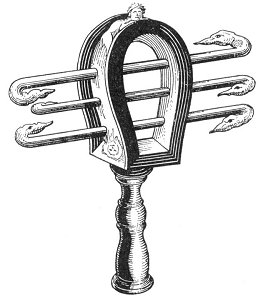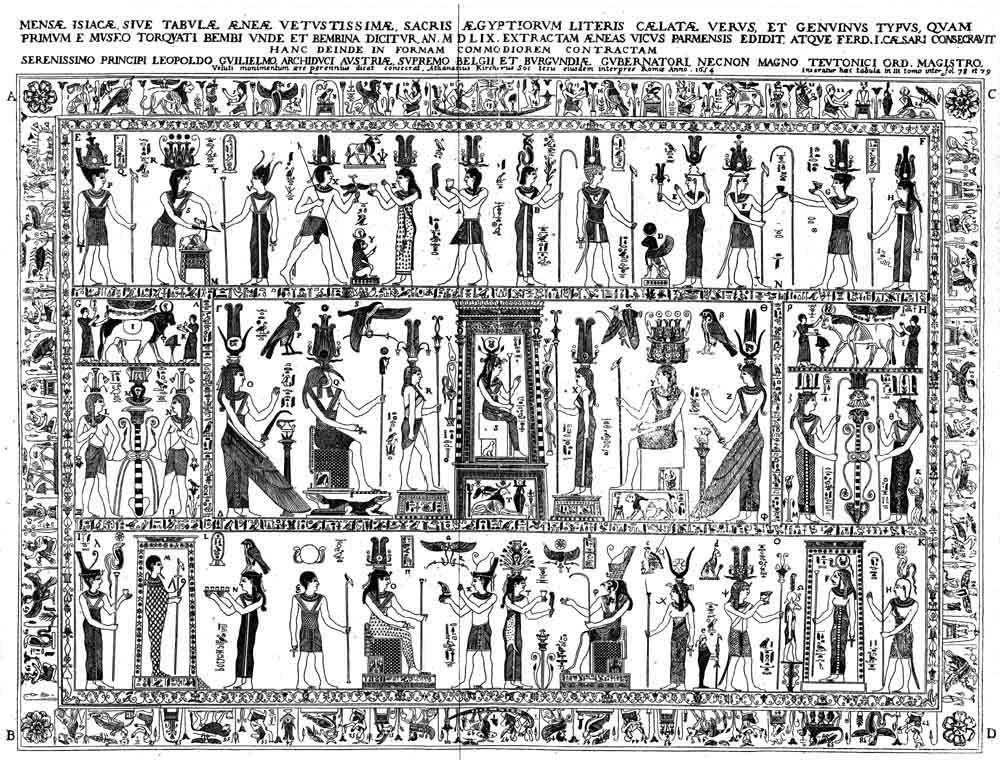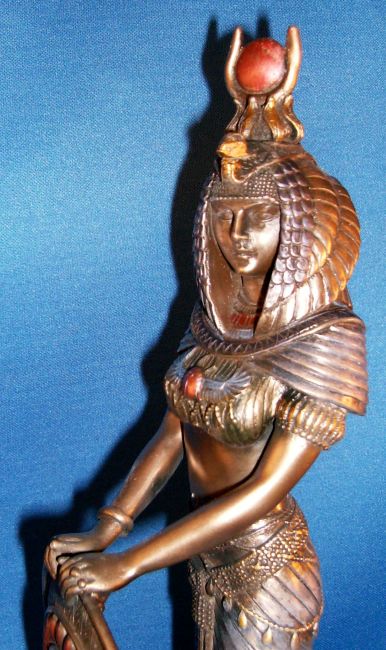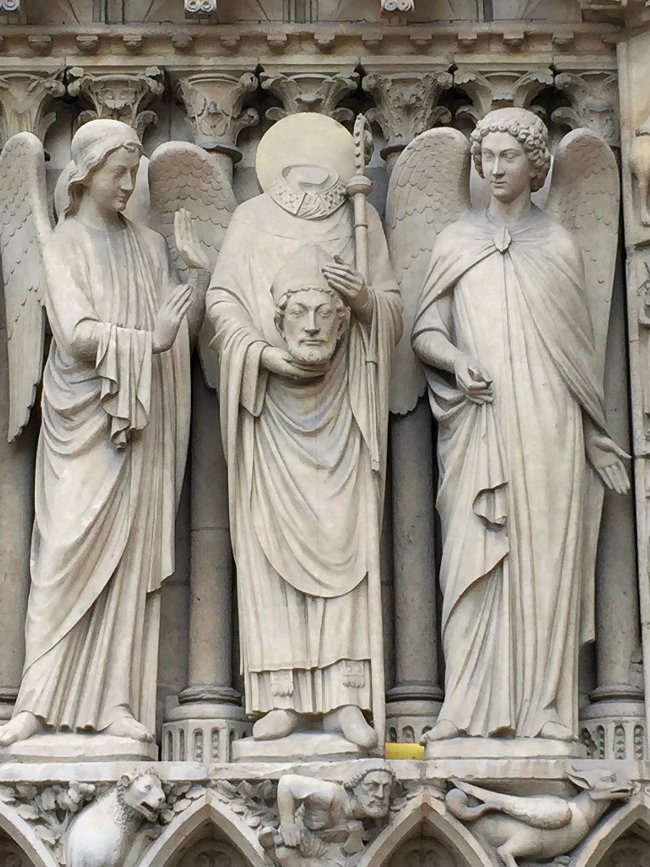The statues of Isis were decorated with the sun, moon, and stars, and many emblems pertaining to the earth, over which Isis was believed to rule (as the guardian spirit of Nature personified). Several images of the goddess have been found upon which the marks of her dignity and position were still intact. According to the ancient philosophers, she personified Universal Nature, the mother of all productions. The deity was generally represented as a partly nude woman, often pregnant, sometimes loosely covered with a garment either of green or black color, or of four different shades intermingled-black, white, yellow, and red.
Apuleius describes her as follows: “In the first place, then, her most copious and long hairs, being gradually intorted, and promiscuously scattered on her divine neck, were softly defluous. A multiform crown, consisting of various flowers, bound the sublime summit of her head. And in the middle of the crown, just on her forehead, there was a smooth orb resembling a mirror, or rather a white refulgent light, which indicated that she was the moon. Vipers rising up after the manner of furrows, environed the crown on the right hand and on the left, and Cerealian ears of corn were also extended from above. Her garment was of many colours, and woven from the finest flax, and was at one time lucid with a white splendour, at another yellow from the flower of crocus, and at another flaming with a rosy redness. But that which most excessively dazzled my sight, was a very black robe, fulgid with a dark splendour, and which, spreading round and passing under her right side, and ascending to her left shoulder, there rose protuberant like the center of a shield, the dependent part of the robe falling in many folds, and having small knots of fringe, gracefully flowing in its extremities. Glittering stars were dispersed through the embroidered border of the robe, and through the whole of its surface: and the full moon, shining in the middle of the stars, breathed forth flaming fires. Nevertheless, a crown, wholly consisting of flowers and fruits of every kind, adhered with indivisible connexion to the border of that conspicuous robe, in all its undulating motions. What she carried in her hands also consisted of things of a very different nature. For her right hand, indeed, bore a brazen rattle [sistrum] through the narrow lamina of which bent like a belt, certain rods passing, produced a sharp triple sound, through the vibrating motion of her arm. An oblong vessel, in the shape of a boat, depended from her left hand, on the handle of which, in that part in which it was conspicuous, an asp raised its erect head and largely swelling neck. And shoes woven from the leaves of the victorious palm tree covered her immortal feet.”
The green color alludes to the vegetation which covers the face of the earth, and therefore represents the robe of Nature. The black represents death and corruption as being the way to a new life and generation. “Except a man be born again, he cannot see the kingdom of God.” (John iii. 3.) White, yellow, and red signify the three principal colors of the alchemical, Hermetical, universal medicine after the blackness of its putrefaction is over.
The ancients gave the name Isis to one of their occult medicines; therefore the description here given relates somewhat to chemistry. Her black drape also signifies that the moon, or the lunar humidity–the sophic universal mercury and the operating substance of Nature in alchemical terminology–has no light of its own, but receives its light, its fire, and its vitalizing force from the sun. Isis was
THE SISTRUM. “The sistrum is designed * * * to represent to us, that every thing must be kept in continual agitation, and never cease from motion; that they ought to be mused and well-shaken, whenever they begin to grow drowsy as it were, and to droop in their motion. For, say they, the sound of these sistra averts and drives away Typho; meaning hereby, that as corruption clogs and puts a stop to the regular course of nature; so generation, by the means of motion, loosens it again, and restores it to its former vigour. Now the outer surface of this instrument is of a convex figure, as within its circumference are contained those four chords or bars [only three shown], which make such a rattling when they are shaken–nor is this without its meaning; for that part of the universe which is subject to generation and corruption is contained within the sphere of the moon; and whatever motions or changes may happen therein, they are all effected by the different combinations of the four elementary bodies, fire, earth, water, and air–moreover, upon the upper part of the convex surface of the sistrum is carved the effigies of a cat with a human visage, as on the lower edge of it, under those moving chords, is engraved on the one side the face of Isis, and on the other that of Nephthys–by the faces symbolically representing generation and corruption (which, as has been already observed, is nothing but the motion and alteration of the four elements one amongst another),”
(From Plutarch’s Isis and Osiris.) p. 47

Moe is the founder of GnosticWarrior.com. He is a father, husband, author, martial arts black belt, and an expert in Gnosticism, the occult, and esotericism.


![How a little boy, dying in the same monastery, called upon a virgin that was to follow him; and how another nun, at the point of leaving her body, saw some small part of the future glory [675 A. D.?] | Book 4 | Chapter 8 How a little boy, dying in the same monastery, called upon a virgin that was to follow him; and how another nun, at the point of leaving her body, saw some small part of the future glory [675 A. D.?] | Book 4 | Chapter 8](https://www.gnosticwarrior.com/wp-content/plugins/contextual-related-posts/default.png)






